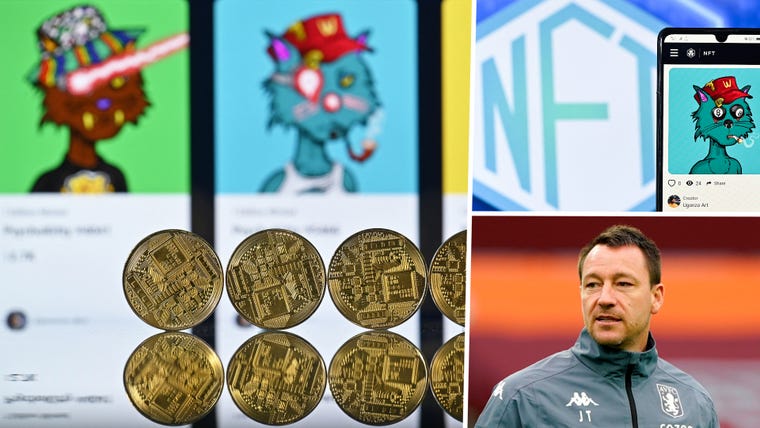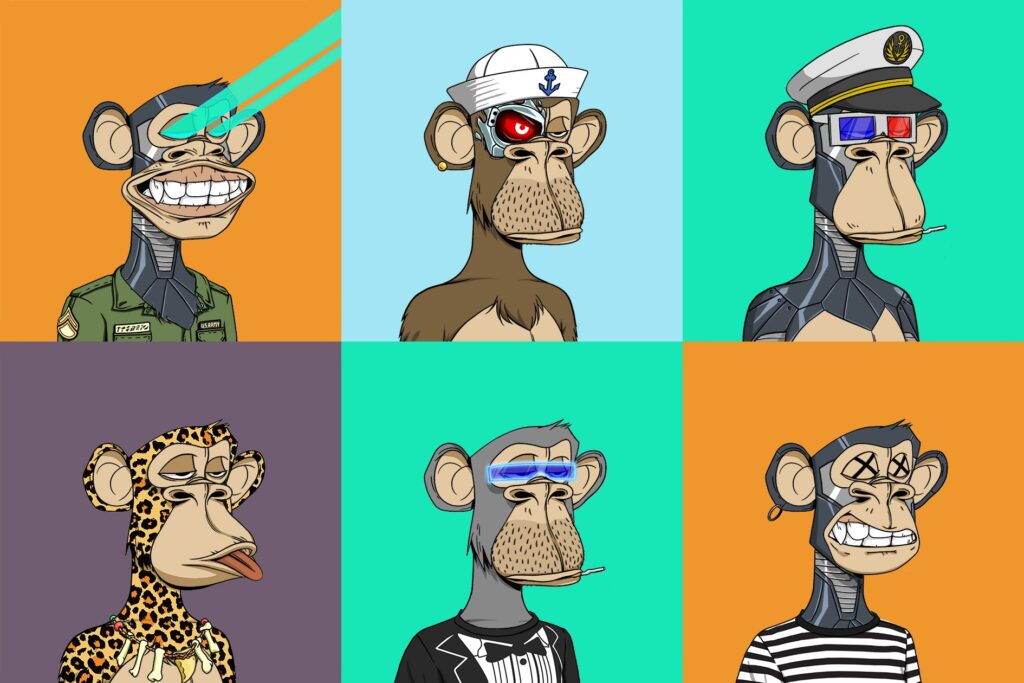
NFTs appear to be the only thing on everyone’s lips these days, both in and out of football – but what precisely are they?
You’ve probably seen footballers like John Terry and others modify their social media icons to a cartoon ape, or seen similar forms of digital art being sold. Certain NFTs have been purchased for astronomical sums of money.
So, what are NFTs, why are footballers trading them, and why are cartoon apes involved? As investigated
What is an NFT?
The term “non-fungible token” refers to a one-of-a-kind digital item that is tracked on a blockchain to prove its uniqueness. NFT data can represent anything found online, including art, images, match highlights, 3-D reconstructions of prizes, and music files, and is bought and sold for very high rates.
NFTs are analogous to real-life collectibles like as trading cards or vinyl records in that they each have their own set of characteristics. They are “non-fungible” because they cannot be replaced by the same specimen – or, in the case of NFTs, the same underlying data.
Despite the fact that others can save alternate, non-official versions, only one individual can own something that has been digitally authenticated on a blockchain. Football NFTs are frequently given more credence because they are created directly by players, teams, or leagues.
“As a mechanism, NFTs make it possible to assign value to digital art, which opens the door to a sea of possibility for a medium that is unbridled by physical limitations,” Noah Davis, a specialist in postwar and contemporary art at Christie’s, told Wired.
If someone posts their NFT online, can’t someone just right-click, save it and “own” it, too?
Kind of, but not quite.
Sure, if someone on Twitter changes their symbol to an NFT that they paid millions of pounds for, any other user can right-click and save the image to use as their own icon — something that many Twitter users have mocked.
The point of an NFT, on the other hand, is that an item has an underlying code with proof of the buyer’s record connected to it, implying that only they own the official version. To put it another way, a right-clicked image isn’t regarded “genuine” because it isn’t backed up by blockchain data. Despite this, social media platforms such as Twitter are beginning to offer incentives to prevent NFTs from being “copied” by others. Twitter Blue users can have their NFTs properly authenticated as their icons, with the paid-for service allowing NFT users to have their icons shown as a hexagon.
What motivates footballers to purchase NFTs?
Purchasing NFTs appears to be a simple and profitable investment for the already wealthy, especially if they are also extremely popular.
Footballers can utilise their celebrity and fortune to purchase NFTs – which can cost hundreds of thousands of pounds – and then resell them at a greater price later, a process known as “changing hands.”
“Retired players used to start a pub or give after-dinner talks in the ancient days.” “Now we see people like John Terry leveraging his billionaire lifestyle to entice supporters into investing into NFTs on the unstated promise that they will be able to enjoy the kind of lifestyle he has,” says Martin Calladine, co-author of Fit and Proper People, a new book about football club ownership.
Footballers are essentially utilising their clout to get an advantage in the NFT market, which many experts regard as an investment vehicle equivalent to other forms of speculative trading such as the stock market.
For those who are actively trading, the NFT market is already profitable. For example, a Kylian Mbappe card sold for around £47,000 (£65,000) on the Sorare platform in December 2020, and a one-of-a-kind Erling Haaland card could smash that record this weekend.
Which players are purchasing NFTs?
John Terry, a former Chelsea and England defender, has been involved in the NFT market, selling a “John Terry Ape” for an auction that drew bids of almost £5,200 ($7,000). Celebrities and high-profile figures are particularly fond of these cartoon ape NFTs, which are part of an NFT initiative called Bored Ape Yacht Club (BAYC). They can be purchased through OpenSea, an NFT marketplace.
Reece James appears to be active in the NFT market as well, albeit his Bored Ape NFT appears to have been given to him rather than purchased.
Terry has successfully encouraged other current and past teammates, including Ashley Cole, Tammy Abraham, and Bobby Zamora, to trade Bored Ape NFTs.
Paul Pogba recently backed CryptoDragons, an NFT initiative, and announced his intention to acquire NFT Eggs.

“I am happy to announce to you I’m partnering with a phenomenal project called CryptoDragons,” Pogba said on his Instagram. “This is my first time getting NFTs, so this is huge. You see I’m going to get some dragon Eggs so as you know what’s gonna happen – I’m gonna be the “Father of Dragons.”
Trent Alexander-Arnold, a Liverpool defender, was briefly embroiled in the NFT trade after changing his profile photo to an NFT of Muhammad Ali, but he secretly pulled it down after receiving harsh feedback from fans.
Others, including Antoine Griezmann, Gerard Pique, and Rio Ferdinand, have invested in complete platforms like Sorare, which sell a variety of NFTs to customers.
What is an NFT for a bored ape?

The Bored Ape Yacht Club is a popular NFT initiative that uses apes to make designs.
The cartoon ape comes in a variety of designs, each of which is unique; customization options include changing the accessories, background, and apparel.
66ETH (£163,000/$220,000) is the cheapest “floor price” for BAYC NFTs — the lowest price at which NFTs can be purchased.
“BAYC is a collection of 10,000 Bored Ape NFTs—unique digital treasures live on the Ethereum blockchain,” according to a statement on their official website. Your Bored Ape also serves as your Yacht Club membership card, granting you access to exclusive amenities like THE BATHROOM, a collaborative graffiti board. The community can access future regions and bonuses by activating the roadmap.
“When you buy a Bored Ape, you’re not simply buying an avatar or a provably-rare piece of art. You are gaining membership access to a club whose benefits and offerings will increase over time. Your Bored Ape can serve as your digital identity, and open digital doors for you.”

